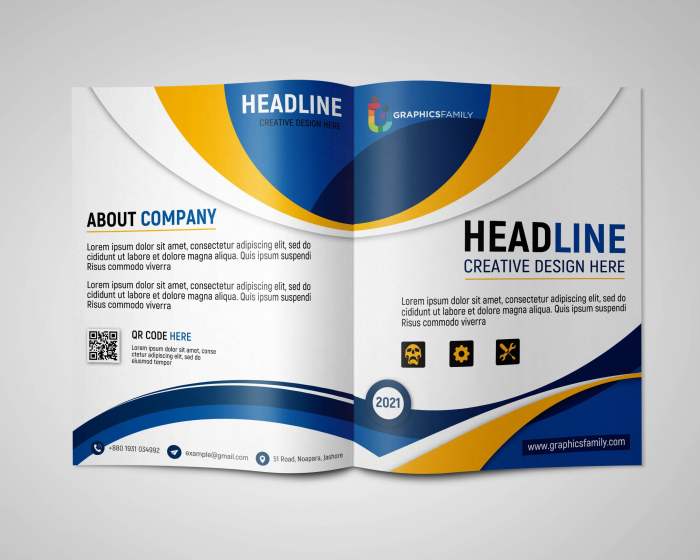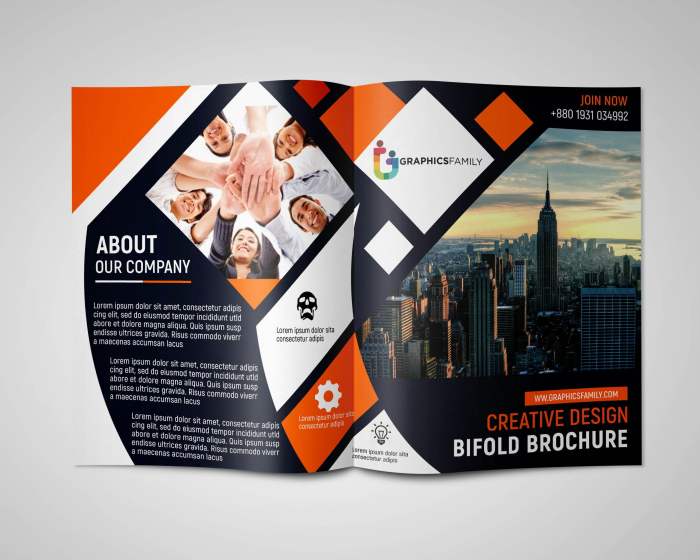Crafting Effective Brochure Design: A Comprehensive Guide
In the realm of marketing and branding, the power of a well-designed brochure cannot be underestimated. This guide delves into the intricacies of brochure design, offering insights and tips that can elevate your brand's presence and engage your target audience effectively.
Importance of Brochure Design

Brochures play a crucial role in the marketing strategy of businesses, serving as a tangible representation of their brand and offerings. Well-designed brochures can make a significant impact on how a company is perceived by potential customers, influencing their decision-making process and driving engagement.
Enhancing Marketing Strategies
Effective brochure design can enhance marketing strategies by providing a visually appealing and informative tool to communicate key messages to the target audience. A well-crafted brochure can attract attention, create interest, and ultimately lead to conversions. For example, a sleek and professional brochure showcasing a company's products or services can capture the interest of potential clients at a trade show or networking event, prompting them to learn more and take action.
Building Brand Recognition
Brochure design is instrumental in building brand recognition and establishing a strong brand identity. Consistent branding elements, such as logos, colors, and fonts, help reinforce brand recall and create a cohesive brand image across various marketing materials. A well-designed brochure that aligns with the brand's visual identity can leave a lasting impression on customers and differentiate the business from competitors.
Enhancing Customer Engagement
Brochures provide an opportunity for businesses to engage with customers on a personal level and deliver tailored messages that resonate with their needs and preferences. By incorporating compelling visuals, engaging content, and clear calls to action, brochures can effectively communicate the value proposition of a product or service and encourage customers to take the next step in the purchasing journey.
Elements of a Compelling Brochure
Creating a successful brochure design involves incorporating various essential components that work together to engage the audience and effectively convey the intended message. Let's explore the key elements that make up a compelling brochure design.
Visuals
Visual elements play a crucial role in capturing the attention of the audience and making the brochure visually appealing. High-quality images, graphics, and illustrations can help communicate the message effectively and create a lasting impression on the readers.
Typography
The choice of fonts and typography can significantly impact the readability and overall aesthetic of the brochure. It is essential to select fonts that are easy to read and align with the brand's identity. Using a combination of fonts for headings, subheadings, and body text can help create hierarchy and guide the readers through the content.
Color Schemes
Color plays a vital role in evoking emotions and setting the tone of the brochure. A well-thought-out color scheme that complements the brand and conveys the message effectively can enhance the overall design. It is crucial to consider color psychology and ensure consistency in color usage throughout the brochure.
Layout
The layout of the brochure determines how information is organized and presented to the audience. A well-structured layout that balances text and images, incorporates white space, and guides the reader's eye through the content can improve readability and engagement. Consideration should be given to the placement of elements to create a cohesive and visually appealing design.
Tips for Balancing Text and Images
- Use visuals to complement and enhance the message conveyed in the text.
- Ensure there is enough white space around text and images to prevent overcrowding.
- Maintain a visual hierarchy by using different font sizes, colors, and styles for headings, subheadings, and body text.
- Limit the amount of text to avoid overwhelming the reader and focus on conveying key messages concisely.
- Choose high-quality images that are relevant to the content and align with the overall design aesthetic.
Types of Brochures

Brochures come in various types, each serving different purposes and industries. Understanding the differences between bi-fold, tri-fold, gatefold, and z-fold brochures can help you choose the right design for your specific needs.
Bi-fold Brochures
Bi-fold brochures are folded in half, creating four panels – two on each side. They are simple and straightforward, making them ideal for events, presentations, or menus where the content can be easily organized into two main sections.
Tri-fold Brochures
Tri-fold brochures are divided into three sections, with two folds creating six panels – three on each side. This type of brochure allows for more content to be displayed and is commonly used for marketing campaigns, product showcases, or informational handouts.
Gatefold Brochures
Gatefold brochures have two parallel folds that open up to reveal a larger interior spread. This design creates a dramatic impact and is often used for high-end products, luxury services, or special events where you want to impress the audience with a unique presentation style.
Z-fold Brochures
Z-fold brochures are folded into a zig-zag pattern, resembling the letter "Z" when fully opened. This design allows for a sequential display of information and is great for step-by-step guides, instructional manuals, or timelines that need to be presented in a clear and organized manner.Each type of brochure design has its own strengths and suits different purposes or target audiences.
Consider the content you want to showcase, the message you want to convey, and the overall impression you want to make when choosing the right brochure format for your project.
Design Trends in Brochure Design
In the ever-evolving world of design, brochure design trends play a crucial role in capturing the attention of the audience. Let's explore some of the current trends shaping the world of brochure design.
Minimalism
Minimalism has been a dominant trend in brochure design, focusing on clean and simple layouts with ample white space. This approach allows the content to stand out and be easily digestible for the reader.
Bold Typography
Bold typography is another popular trend that adds personality and visual interest to brochures. By using striking fonts and typography styles, designers can create a strong visual hierarchy and draw the reader's attention to key messages.
Vibrant Colors
Vibrant colors are being increasingly used in brochure design to create eye-catching and memorable designs. Bold and bright color schemes can evoke emotions, set the tone for the brand, and make the brochure visually appealing.
Examples of Innovative Brochure Designs
- The Airbnb "Welcome to Miami" travel guide brochure, which uses a minimalist layout with vibrant colors and stunning photography to showcase the beauty of Miami.
- The Nike "Just Do It" brochure, featuring bold typography and dynamic design elements that reflect the brand's energetic and motivational spirit.
Influence of Technology
Technology has revolutionized brochure design, allowing for interactive and digital brochures that engage the audience in new ways. Augmented reality, video integration, and 3D effects are just a few examples of how technology has influenced modern brochure design trends.
Tips for Designing an Effective Brochure
When it comes to designing a brochure that captures attention and effectively conveys your message, there are several key tips to keep in mind. From visual appeal to informative content, each aspect plays a crucial role in the success of your brochure design.
Understanding the Target Audience
To create a brochure that resonates with your target audience, it's essential to have a deep understanding of who they are, what they are looking for, and how your product or service can meet their needs. Conducting market research and creating buyer personas can help you tailor your design and messaging to appeal directly to your target demographic.
Incorporating Branding Elements
Seamlessly integrating branding elements into your brochure design is key to maintaining consistency across all your marketing materials. From colors and fonts to logos and taglines, make sure that your brochure reflects your brand identity and reinforces brand recognition. Consistent branding helps build trust and credibility with your audience.
Visual Appeal and Information Balance
When designing a brochure, striking a balance between visual appeal and informative content is crucial. Use high-quality images, engaging graphics, and whitespace strategically to grab attention and guide the reader through the information. Make sure the text is concise, clear, and relevant to keep the reader engaged and interested.
Call to Action (CTA)
Including a clear and compelling call to action in your brochure is essential to prompt the reader to take the next step, whether it's visiting your website, contacting your business, or making a purchase. Your CTA should be prominently displayed and easy to understand, driving the reader towards the desired action.
Professional Printing and Quality Materials
Investing in professional printing and high-quality materials can elevate the overall look and feel of your brochure. Choose the right paper stock, finish, and printing techniques to enhance the tactile experience and leave a lasting impression on your audience. A well-crafted brochure reflects positively on your brand and communicates professionalism.
Tools and Software for Brochure Design

When it comes to designing brochures, having the right tools and software can make a significant difference in the final outcome. Different graphic design software offer various features and capabilities, so choosing the right one based on your design requirements and skill level is crucial.
Popular Tools and Software
- Adobe InDesign: Known for its advanced layout design capabilities and seamless integration with other Adobe Creative Cloud apps.
- Canva: A user-friendly online tool with pre-designed templates and drag-and-drop functionality, perfect for beginners.
- Microsoft Publisher: Offers a wide range of template options and is ideal for those familiar with Microsoft Office tools.
- Lucidpress: Allows for collaborative brochure design with team members and offers easy sharing and publishing options.
Choosing the Right Tool
- Consider your design requirements: If you need advanced layout features, Adobe InDesign might be the best choice. For quick and easy designs, Canva could be more suitable.
- Assess your skill level: Beginners might find Canva or Microsoft Publisher easier to use, while experienced designers may prefer the flexibility of Adobe InDesign.
- Look for integration options: If you already use other design software or tools, consider compatibility and integration capabilities when choosing a software.
Conclusion
As we conclude this exploration of brochure design, remember that a carefully crafted brochure can be a game-changer for your business. By incorporating the right elements and staying updated on design trends, you can create visually stunning brochures that leave a lasting impact on your audience.
FAQ Resource
What role does color scheme play in brochure design?
Color scheme can evoke emotions and convey brand personality. It's essential to choose colors that align with your brand identity and resonate with your target audience.
How can I ensure balance between text and images in a brochure?
One way to achieve balance is by using whitespace effectively. Ensure that text and images have enough breathing room to avoid overcrowding the design.
Are there any specific design tools recommended for beginners?
Tools like Canva and Adobe Spark are user-friendly and offer templates that can help beginners create professional-looking brochures with ease.